Baracoa, Cuba’s La Primada, is the site of the first Spanish settlement where the famous explorer Christopher Columbus landed in 1492. Established as a settlement in 1511, the place is so remote that it was technically reachable only by sea until a road was constructed through the picturesque Sierra de Purial Mountains in the 1960s. It is one of those places wherein you can literally see, feel, smell and even taste its age. You can also notice the prominence of the indigenous Taino features of its mixed race inhabitants, a rarity in much of Cuba because the local indigenous Indian population was decimated by European-borne diseases and massacres. Baracoa’s most famous denizen, among others, was the legendary Taino Chief Hatuey, the first rebel in a country of full of revolutionaries throughout its history, whose face now emblazons a local brand of beer.
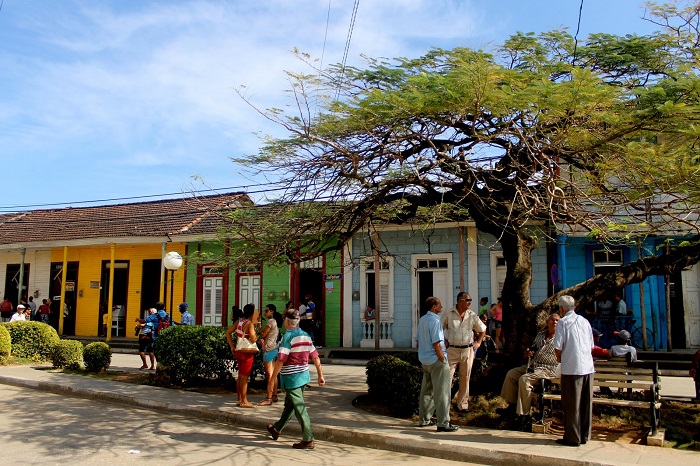
The place is so well off the beaten path because of its remote location. Surprisingly, a good number of tourists were on hand for the New Year’s holiday. Of course, it was very apparent that the greater majority of tourists belong to the backpacker and adventurous variety. They, who patronize casas particulares (bed-and-breakfast rooms) over luxurious accommodations, which, by the way, do not exist in Baracoa. Even at the best local hotels (e.g., El Castillo, La Habanera and Porto Santo) lacks the requisite customer service and amenities. There aren’t a lot of restaurants to choose from in town, but you do have the option of having yourself prepared with a home-cooked meal at your casa particular uor at the paladares or private restaurants in the town. It’s a fishing town, so try the local seafood delicacy. If you are looking for the all-inclusive type of accommodations, this obviously isn’t the place to go.
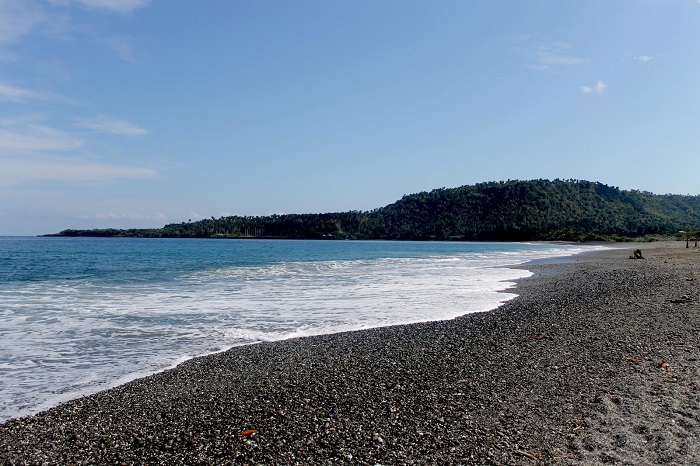
Baracoa is for the eco traveler, the type who doesn’t mind hiking scores of kilometers along deserted beaches and mountain paths (senderos as the locals call them). Baracoa’s real jewels are its lush mountains, hidden cascades, unspoiled rivers and empty beaches, and of course its connection to the conquistadores Columbus and Diego Velasquez. In my view, the best way to explore the town and its immediate vicinity is not to have plan at all. Let your feet and road ahead lead you. Just keep walking and you will figure it out eventually. That’s how I discovered the pristine beaches of tiny Playa Blanca and expansive Playa Negra, the caves and lookout point of Yara Majayara, and, following personal habit, a visit to the town’s colonial cemetery.
Of course, there’s the pre-arranged tours . You need to get one from a travel agency in order to reach El Yunque or some of the nearby nature reserves. I booked myself a guide to ascend the tabletop El Yunque, together with an elderly Swiss couple in tow. A complete ascent and descent of El Yunque usually takes three to four hours for regular tourists. However, those elderly Swiss couple were strong climbers that we got up pretty fast. It must me their Alpine training. We had enough time to make a detour to a secluded cascade, which locals say is a holy site for Santeria goddess Yemaya. We took a rejuvenating bath in its freezing waters and replenished our water bottles with spring water. A word of advice: wear appropriate shoes for the ascent. My Air Jordans were totally unusable due to the wear and tear of the climb that I had to dispose them later.
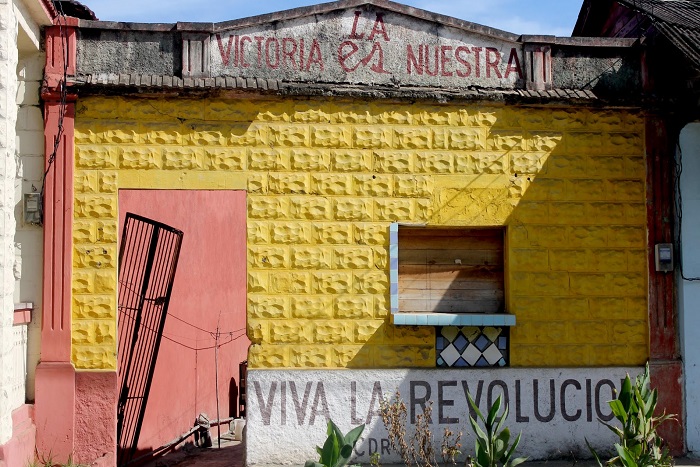
The town itself is very small. You can literally walk around it in less than a day. It is very nondescript. The centuries-old homes are crumbling by the ravages of time. The locals have this very distinct rapid fire sing-song accent, which is very distinct from the Habanero accent. The twon puts up a very brave front of fealty to the revolution because it opened Baracoa up to the outside world in the 1960s. There is a preponderance of revolutionary slogans painted on walls. Yet, you could tell that the brave front is just what it is – a façade. The Baracuese, whenever you have sufficiently obtained their confidence and when not in spitting distance of other people, would tell you that they like nothing more than to bring themselves into modernity and to enjoy the comforts of a modern society. You could tell, by just looking at their humble abode and their lifestyle, that this is definitely a place forgotten by the times. This is nice for the visitor who wants to savor the atmosphere of a Spanish colonial frontier town. Yet, this is definitely hard for those who have to stay put and live all their lives in relative seclusion.
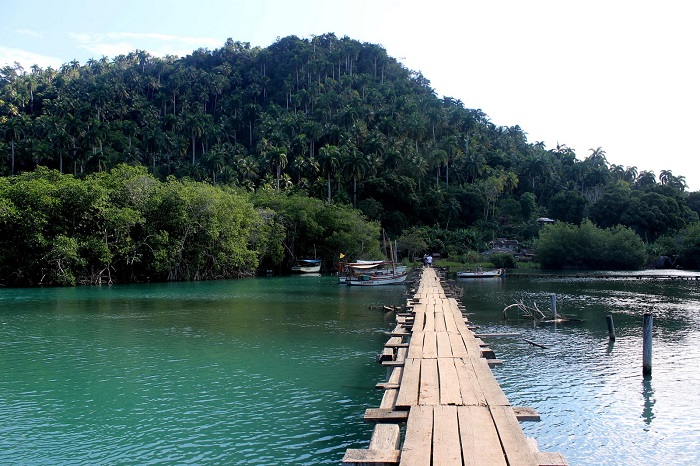
Whenever I mentioned my nationality to the locals, they would always call me: El primer Filipino en Baracoa. This isn’t really a huge surprise because I couldn’t imagine how a Filipino could stumble into such a secluded place off the beaten path. When I climbed the mirador or lookout point in Yara Majayara, I heard the locals call me the same thing. When I climbed the 575 meter El Yunque table top mountain, the guide christened me with the same moniker. When I stumbled upon the supposed site of Columbus’ embarkation point in Baracoa in Porto Santo, I was told I was the first paisano to have visited the place. True or not? Nobody really knows. Meanwhile, I get to use the distinction as long as nobody dares to prove me wrong. The locals gave that to me.
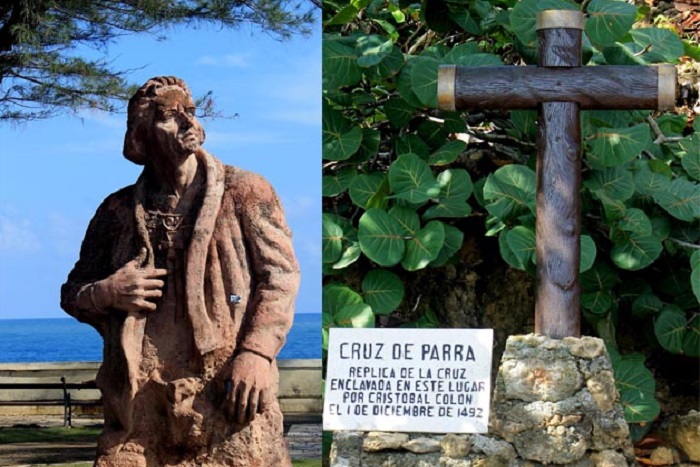
Strangely though, for a place whose renown is linked to that of Columbus, only a handful of locals actually know where the exact location of the original embarkation point of Columbus is. I asked a number of people where it was and I was usually told to go to the Malecon. It’s false. That is where Columbus’ statue can be found. Others mistakenly pointed me to Playa Duaba where another historical figure, the so-called bronze titan Antonio Maceo, landed in his quest for independence from Spain.
Having been mistakenly directed for the most part, now dripping with sweat and standing shirtless in front of the hotel that bears the name of Columbus’ supposed place of arrival, Porto Santo, I thought I shouldn’t that war from it. With my feet painfully sore with blisters for having walked for miles, I finally heard from the security guard of Hotel Porto Santo the words that I had been trying to hear: “Si, señor. La Cruz de Parra está aquí detras.” It was located, of all places, at the back of the hotel that bears its name. Why the hell didn’t I think of that! It was all worth it though. All those walking were worth it in exchange for being able to stand on the place where a giant of world history first planted his foot on Cuban soil. I might have said a prayer, but I couldn’t exactly remember.